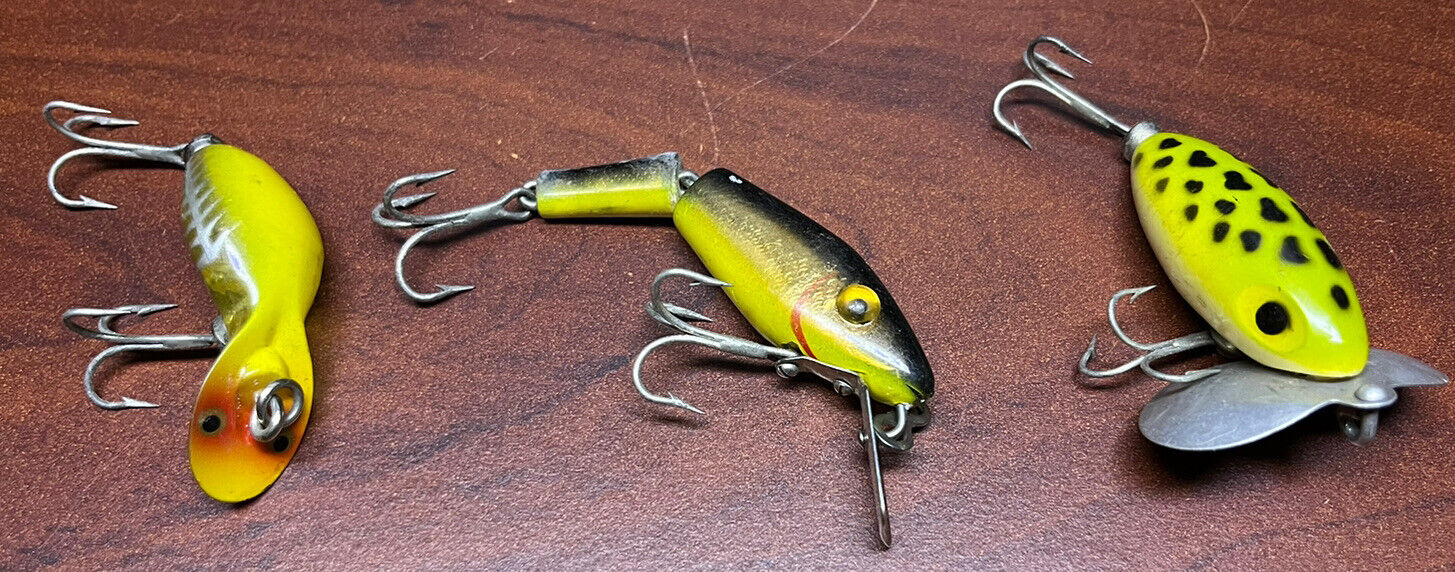The Hidden Treasures: Exploring the Value of Old Fishing Lures and How to Identify Vintage Gems
In the world of angling, the pursuit of fish is not the only thrilling aspect. For enthusiasts, the charm of vintage fishing lures lies in their historical significance, craftsmanship, and even their potential monetary value. These relics from the past are not only functional tools but also pieces of art that tell tales of fishing’s evolution. This article delves into the allure of old fishing lures, their value, and how to identify these prized possessions.
The Allure of Old Fishing Lures
Old fishing lures are more than just tools for catching fish; they are windows into the past, reflecting the ingenuity and creativity of their makers. Anglers have been using lures for centuries, and as fishing evolved from a necessity for sustenance to a recreational hobby, so did the lures themselves. Early lures were often simple designs made from wood, bone, or metal, but as time went on, they became increasingly intricate and diverse in their materials and shapes.
Value and Collectibility
The value of old fishing lures can vary widely, ranging from a few dollars to thousands or even tens of thousands of dollars. Several factors contribute to a lure’s value:
- Rarity: Lures that were produced in limited quantities or were only available for a short time tend to be more valuable. Limited production runs often mean that fewer examples have survived over the years.
- Condition: Like any collectible, the condition of a vintage fishing lure is crucial. Lures in excellent condition, with their original paint, hooks, and hardware, are more desirable and valuable.
- Age: Generally, older lures are more valuable, especially if they’re from the late 19th to early 20th century when lure design was still evolving.
- Maker: Lures made by well-known manufacturers or skilled craftsmen tend to have higher values. Companies like Heddon, Creek Chub, and Shakespeare produced lures that are highly sought after by collectors.
- Uniqueness: Unusual designs, experimental colors, or prototypes can greatly increase a lure’s value.
Identifying Vintage Fishing Lures
Identifying vintage fishing lures can be both an exciting challenge and a rewarding endeavor. Here are some steps to help you identify these treasured artifacts:
- Research: Begin by researching the history of fishing lure manufacturers and their various designs. Study reference books, online resources, and collector forums to gain a better understanding of different styles, materials, and marks used by different makers.
- Construction Materials: Early lures were often made from wood, while later ones incorporated plastic, metal, and other materials. Identifying the material can offer clues about a lure’s age.
- Hardware: Examine the hooks, eyes, and other hardware. Original hardware can contribute to a lure’s authenticity and value.
- Paint and Finish: Study the paint patterns and finishes. Many vintage lures were hand-painted, and specific color patterns can indicate certain time periods.
- Markings and Labels: Some lures have manufacturer’s marks, patent numbers, or other identifying information stamped on them. These can help you trace the origin of the lure.
- Reference Guides: Utilize reference guides and online resources that provide images and information about various vintage lures. These guides can help you match your lure to known examples.
- Condition Assessment: Carefully examine the lure for any signs of restoration, repainting, or replacement parts. Original condition is vital for maximizing value.
Preserving and Enjoying Old Fishing Lures
Whether you’re an avid collector or stumbled upon a vintage lure while cleaning out your garage, it’s important to take proper care of these historical artifacts. Store them in a cool, dry place away from direct sunlight and extreme temperature fluctuations. Avoid cleaning them with harsh chemicals, as this can damage their delicate paint and finish.
In conclusion, old fishing lures hold a special place in the hearts of anglers, historians, and collectors alike. Beyond their functional use, these lures encapsulate the evolution of fishing as a leisure activity and offer insights into the craftsmanship of bygone eras. By understanding their value and learning how to identify vintage fishing lures, you can unlock the mysteries of the past and perhaps even unearth a hidden treasure in your own collection.
